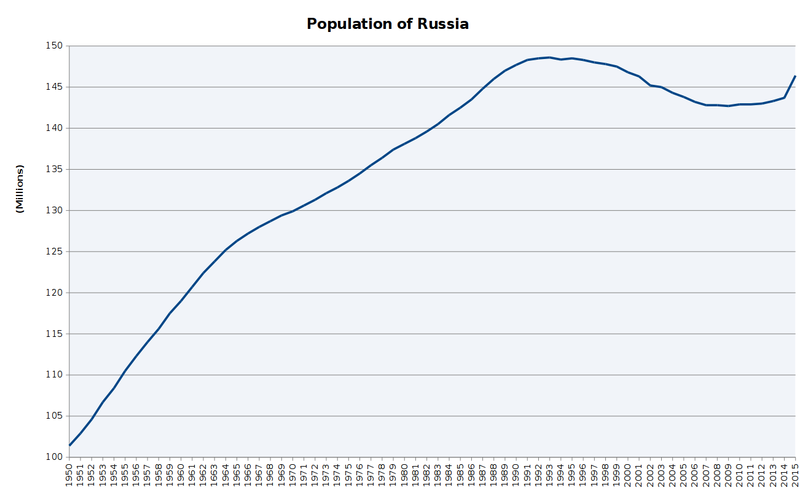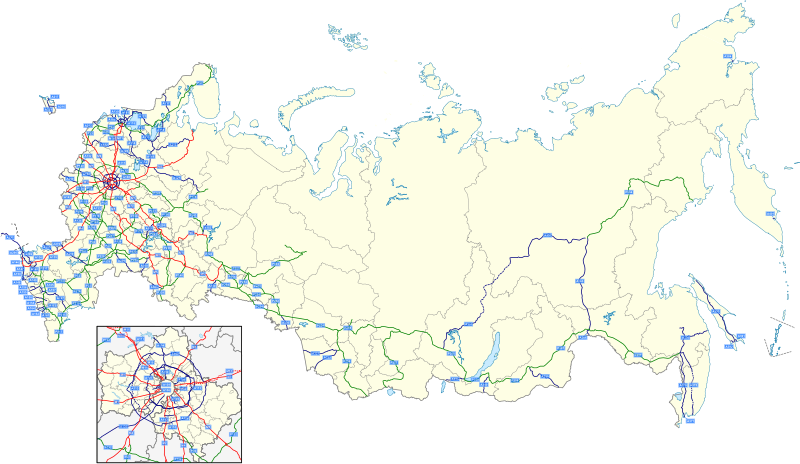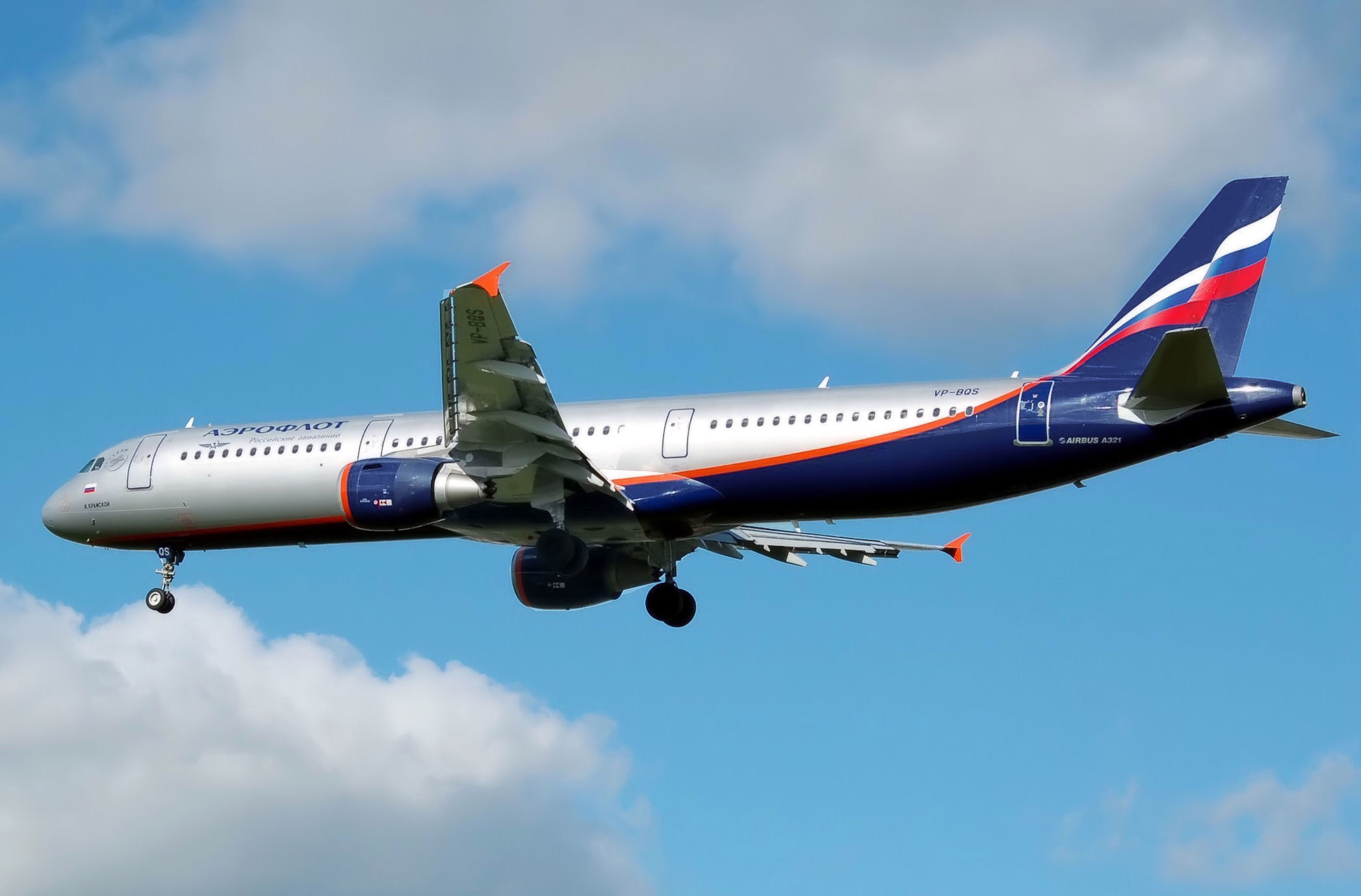Throughout this blog I have used 23 images. I do not claim that these images are mine. I have sourced all these images from google images.
d97'sblogs
Friday 15 November 2013
Monday 11 November 2013
Population
Russia has a population of 143,500,000(9th worldwide), this figure has been in decline since 1991 when the Soviet Union was dissolved but has been on the increase since 2009. This increase is due to inward migration from surrounding nations mostly CIS nations. President Putin predicts a population of 146,000,000 by 2025, although a sizeable amount of this increase is due to immagrants it is also due to natural increase in ethnic Russians. At the moment 81% of Russia's population is comprised of ethnic Russians. Russia's birth rate has been increasing and the death rate has been declining due to the government attacking the demographic issue that became apperant in the early 1990's.
Russia's birth rate stands at 13.3 per 1000 people in 2010 this is well above the EU average of 9.9 per 1000. Currently the Russian government is trying to tackle the high death rate in the country (13.3 per 100) and if this is substantially lowered Russia can turn its recent population increases into large increases that will help keep the nation healthy and powerful into the future.
Russia's birth rate stands at 13.3 per 1000 people in 2010 this is well above the EU average of 9.9 per 1000. Currently the Russian government is trying to tackle the high death rate in the country (13.3 per 100) and if this is substantially lowered Russia can turn its recent population increases into large increases that will help keep the nation healthy and powerful into the future.
Russia has a very low population density of 8.4 per km2, 73% of the population lives in urban areas while 27% lives in rural areas. The majority of people in Russia live in the European part of the country and a narrow band across southern Siberia.
Russia has some very large cities, these are the top five by population...
Moscow 11,514,00
St.Petersburg 5,227,000
Novosibirsk 1,473,000
Yekaterinburg 1,350,000
Nizhny Novgorod 1,250,000
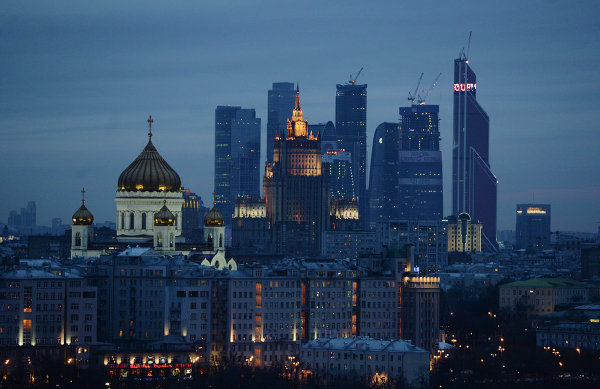
Thursday 24 October 2013
Russia's transport system
Russia's transport system is very impressive, this is because it has to connect 143.5 million people in cities up to 9000km apart and in nine sperate time zones.
 A station in the moscow metro system.
A station in the moscow metro system.
Here are some facts that show the size of Russia's transport network,
There is 85,000km of commonly used railway track which is the second most of any nation in the world.
There is 755,000km of paved road.
There is 102,000km of navigable inland waterways.
There is 1216 airports.
There is 465.4km of metro railway line.
The Trans-siberian railway runs a service from Moscow to Vladivostok (9259km)
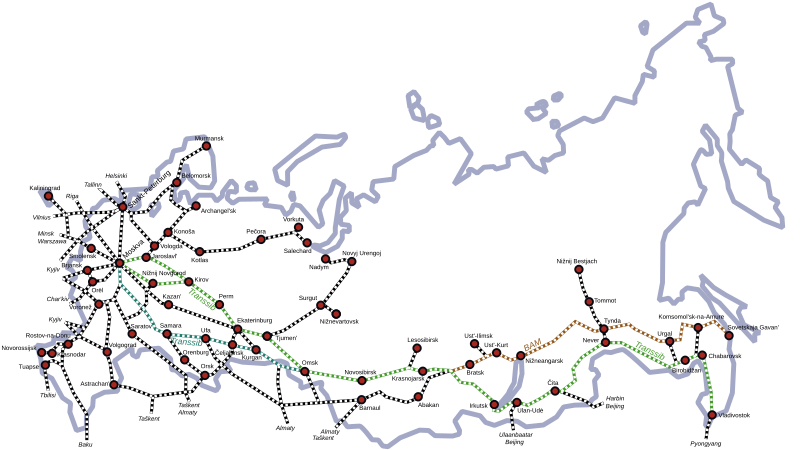 The railway network of Russia
The railway network of Russia
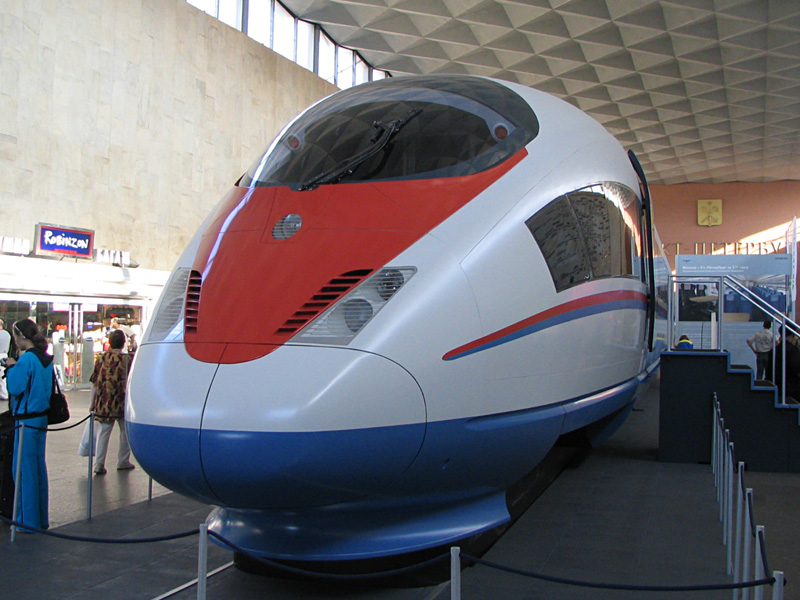 The Velaro RUS EVS high speed train.
The Velaro RUS EVS high speed train.
 The new terminal at Domodedevo airport
The new terminal at Domodedevo airport
Russia's National airline called Aeroflot is a very successful airline offering worldwide routes and while still offering a substantial network of domestic routes. Aeroflot has 136 planes in its fleet and has 116 destinations worldwide. Aeroflot is also a very modern airline with an impressive average plane age of 5.2 years.
An airliner from Russia's national Airline Aeroflot, it shows the airlines new livery that is based on the national flag.
 A station in the moscow metro system.
A station in the moscow metro system.Here are some facts that show the size of Russia's transport network,
There is 85,000km of commonly used railway track which is the second most of any nation in the world.
There is 755,000km of paved road.
There is 102,000km of navigable inland waterways.
There is 1216 airports.
There is 465.4km of metro railway line.
The Trans-siberian railway runs a service from Moscow to Vladivostok (9259km)
 The railway network of Russia
The railway network of Russia
Russia is developing new transport systems and is updating old ones. The moscow metro is up to date and modern while it still transports 2464 million people per year.It is the second busiest metro system on the planet. There was a new high speed train link set up in Russia called Velaro RUS EVS it set the Russian rail speed record of 290 km/h in early 2009, the service is one of the fastest and most convenient in the world.
 The Velaro RUS EVS high speed train.
The Velaro RUS EVS high speed train.
The Russian road network is vast but still has a low road density. There is a Russian Federal Motorway System which as shown below is extensive in the populous areas of European Russia but is spread far and wide in Siberia, it looks very similar to rail network. The networks of both road and rail look similar because they follow were the general populous of the nation live.
As you can see the road and rail networks are focused on the heavily populated regions of Russia.
Russia has 1216 airports the bussiest of which are Sheremetyevo, Domodedovo, and Vnukovo in Moscow, then Pulkovo in St.Petersburg. Domodevedo is the largest airport in Russia with 28 million passengers travelling through it each year (11th busiest in Europe) Sheremotyevo is ranked 13th in Europe with a similar 26 million passengers per year.
 The new terminal at Domodedevo airport
The new terminal at Domodedevo airportRussia's National airline called Aeroflot is a very successful airline offering worldwide routes and while still offering a substantial network of domestic routes. Aeroflot has 136 planes in its fleet and has 116 destinations worldwide. Aeroflot is also a very modern airline with an impressive average plane age of 5.2 years.
An airliner from Russia's national Airline Aeroflot, it shows the airlines new livery that is based on the national flag.
Monday 21 October 2013
Russia's lakes
Russia has one quarter of all the fresh water on the planet, a significant portion of the water is held in Russias many lakes. Lake Baikal in southern Siberia is the deepest lake in the world at a staggering 5387ft in depth. Lake Baikel is 25 to 30 million years old and has formed in a rift valley. At 31,722km2 it is the largest freshwater lake in all of Asia and the largest lake in Russia.
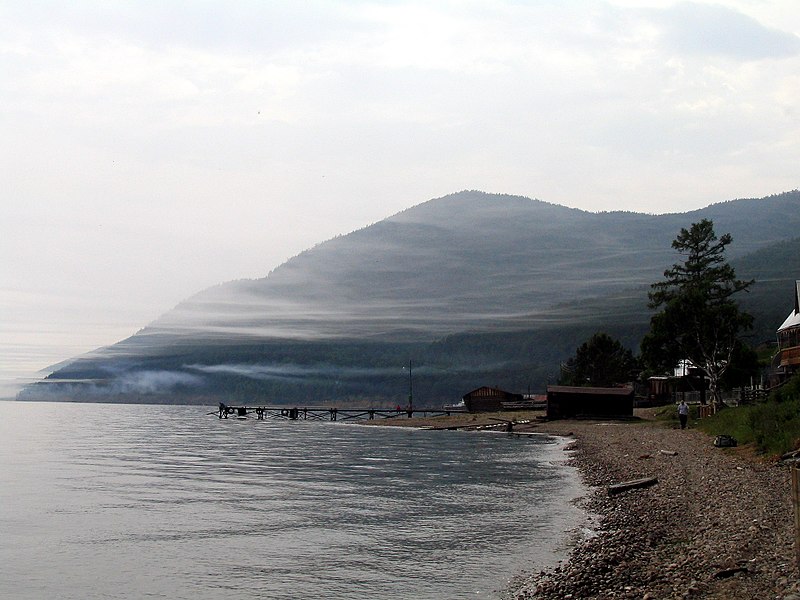 A section of the southern shore of lake Baikal
A section of the southern shore of lake Baikal
The two largest lakes in Europe are both in Russia, lake Ladoga and lake Onega at 17,700km2 and 9,700km2 they are significantly larger than nearly all European lakes. Both of these lakes are young because they are remenents of a much larger lake that exsisted during the last ice age. The lakes are both around 12,000 years old.
 A section of the southern shore of lake Baikal
A section of the southern shore of lake BaikalThe two largest lakes in Europe are both in Russia, lake Ladoga and lake Onega at 17,700km2 and 9,700km2 they are significantly larger than nearly all European lakes. Both of these lakes are young because they are remenents of a much larger lake that exsisted during the last ice age. The lakes are both around 12,000 years old.
Saturday 19 October 2013
Russia's Coastline
The coastline of russia.
Russia has the third longest coastline of any nation on the planet, the biodiversity along the coast line is astonishing. This is because there is a range of habitats from the small, warm shallow sea of Azov to the large cold Artic ocean. Coast line length is a hard thing to determine but acording to The World Factbook Russias coastline is 37,653km long.

Russia has coastline along several seperated large bodies of water. There is coastline along the Caspian sea, Black sea, sea of okhotsk, Pacific ocean, Baltic sea and several other seas and oceans.
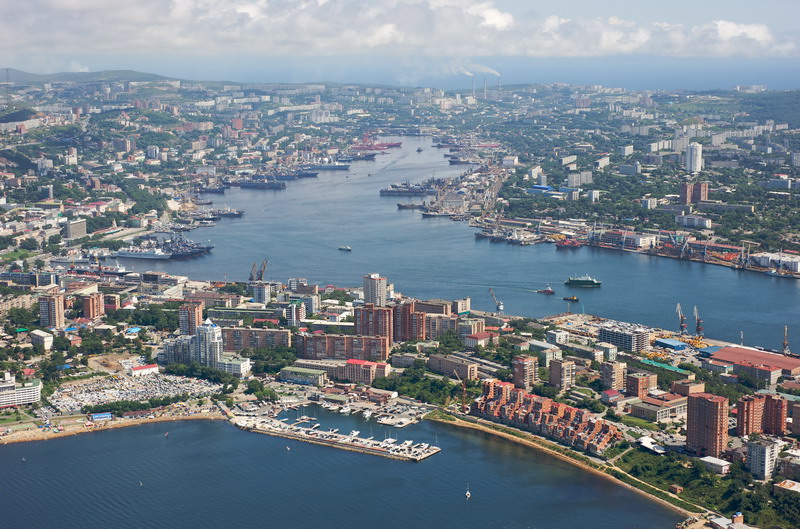 Port at Vladivostok, Eastern Russia.
Port at Vladivostok, Eastern Russia.
Russia has hundreds of ports along the coastline with the most major being Kaliningrad (Baltic), Rostov-on-Don (Black sea), and Vladivostok (Pacific ocean).
The largest stretch of coast line is all across the North of the countrbeginning at the Norwegian border and spanning all the way to the East until the Chinese border. This stretch of coastline is all excessable in the summer but during the winter two thirds wsould be surrounded bt thick ice sheets.
Russia has the third longest coastline of any nation on the planet, the biodiversity along the coast line is astonishing. This is because there is a range of habitats from the small, warm shallow sea of Azov to the large cold Artic ocean. Coast line length is a hard thing to determine but acording to The World Factbook Russias coastline is 37,653km long.

Russia has coastline along several seperated large bodies of water. There is coastline along the Caspian sea, Black sea, sea of okhotsk, Pacific ocean, Baltic sea and several other seas and oceans.
 Port at Vladivostok, Eastern Russia.
Port at Vladivostok, Eastern Russia.Russia has hundreds of ports along the coastline with the most major being Kaliningrad (Baltic), Rostov-on-Don (Black sea), and Vladivostok (Pacific ocean).
The largest stretch of coast line is all across the North of the countrbeginning at the Norwegian border and spanning all the way to the East until the Chinese border. This stretch of coastline is all excessable in the summer but during the winter two thirds wsould be surrounded bt thick ice sheets.
Thursday 17 October 2013
The rivers of Russia
This post is about the rivers of russia.
Russia has over one hundred thousand rivers which means including the countries lakes it has one quarter of all the worlds fresh water.
 The Lena river delta, North East Russia.
The Lena river delta, North East Russia.
The longest rivers in Russia are the Yenisei River (5th longest river in the world at 5539km) the River Ob (the 7th longest river in the world at 5410km) and the River Lena (the 11th longest river in the world at 4400km).
 Bridge over the Yenisei at Krasnoyarsk.
Bridge over the Yenisei at Krasnoyarsk.
The longest river in European Russia is the river Volga (the 17th longest worldwide and the longest in all of Europe at 3645km), while the longest river in the east is the River Yenisei.
The rivers of Russia serve the country greatly as supplies of freshwater, attractions for tourists and in the production of hydroelectricity. Russia is the worlds 5th largest producer of hydroelectricity.
 The power plant at Ivankovo
The power plant at Ivankovo
The most famous river in all of Russia is the river Volga as almost two thirds of russias population lives in its catchment area, it has become an integril part of the nation. The Volga is a centre of Russian tourism. Eleven of the twenty largest Russian cities are located in the drainage basin of the Volga. It also has some of the worlds largest reservoirs.It is considered the unofficial national river of Russia.
 The River Volga at Ulyanovsk.
The River Volga at Ulyanovsk.
Russia has over one hundred thousand rivers which means including the countries lakes it has one quarter of all the worlds fresh water.
 The Lena river delta, North East Russia.
The Lena river delta, North East Russia.The longest rivers in Russia are the Yenisei River (5th longest river in the world at 5539km) the River Ob (the 7th longest river in the world at 5410km) and the River Lena (the 11th longest river in the world at 4400km).
 Bridge over the Yenisei at Krasnoyarsk.
Bridge over the Yenisei at Krasnoyarsk.The longest river in European Russia is the river Volga (the 17th longest worldwide and the longest in all of Europe at 3645km), while the longest river in the east is the River Yenisei.
The rivers of Russia serve the country greatly as supplies of freshwater, attractions for tourists and in the production of hydroelectricity. Russia is the worlds 5th largest producer of hydroelectricity.
 The power plant at Ivankovo
The power plant at IvankovoThe most famous river in all of Russia is the river Volga as almost two thirds of russias population lives in its catchment area, it has become an integril part of the nation. The Volga is a centre of Russian tourism. Eleven of the twenty largest Russian cities are located in the drainage basin of the Volga. It also has some of the worlds largest reservoirs.It is considered the unofficial national river of Russia.
 The River Volga at Ulyanovsk.
The River Volga at Ulyanovsk.Natural Resources
In this article I will take an economic standpoint on russias resources.
The amount of raw materials that can be produced by Russia is enormous. It is the worlds largest exporter of natural gas and the second largest producer.Russia produces the most amount of oil of nation on the planet and is the worlds leading exporter. Russia produces the 3rd most electricity in the world and the 5th most renewable electricity .Russia is without a dought an energy superpower.
The total area of cultivated land in Russia was estimated as 1,237,294 km in 2005, the fourth largest in the world.Russia is the leading exporter worldwide of rye, barley, buckwheat and sunflower seeds. it is also the third largest producer of meat worldwide second only to the European Union and The United States Of America. Russias agricultural output is still growing and there is definate substantial growth potential.
 Powerstation at Surgut, central Russia
Powerstation at Surgut, central Russia
The greatest potential oppurtunity for russian export is in forestry as it is the largest forested country in the world. It contains one fifth of the worlds forests. Russia will increase output of wood into the future.
Subscribe to:
Posts (Atom)

